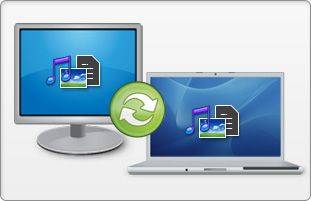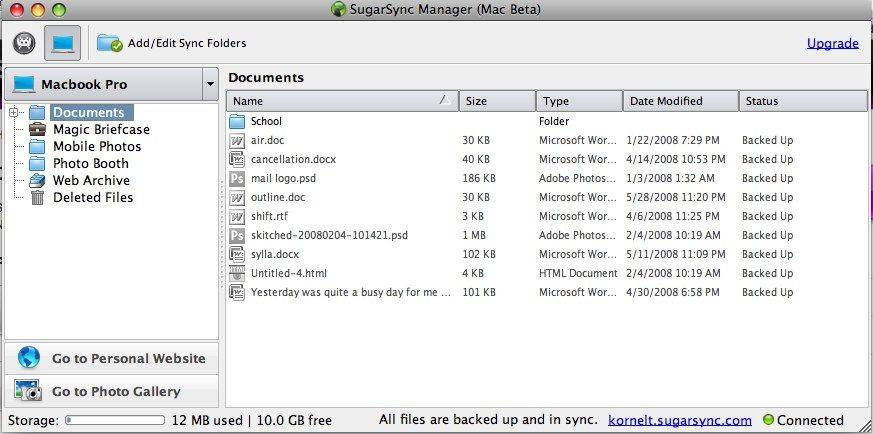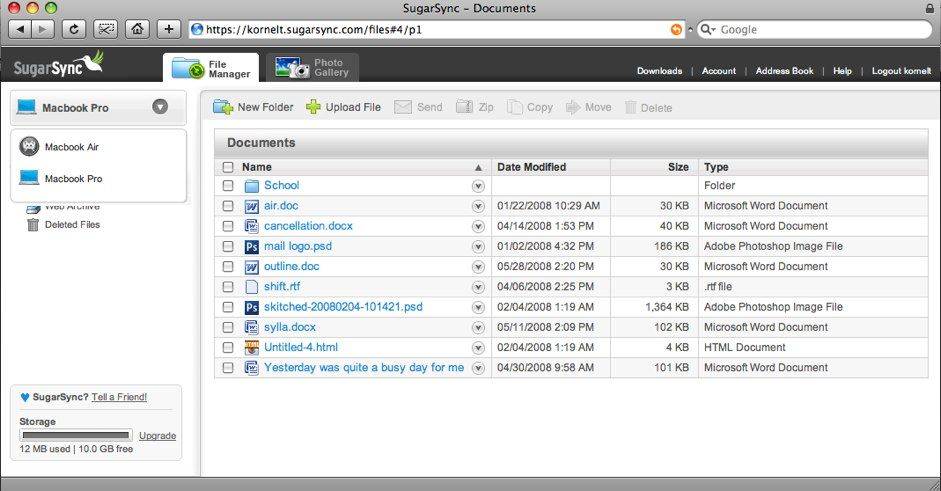 It used to rare that we had more than one computer. Or so I have been told anyways. Today we have a lot more devices I myself have a desktop, a laptop, a phone and a UMPC. I sometimes also use public computers. Now how do I keep my data in sync and access it wherever I am? Here’s where SugarSync comes in. What is it? Essentially it is a data syncing solution that relies on a central online server instead of syncing straight from device to device. So basically it takes your data and uploads it to SugarSync’s server where you can access it from a web interface and from where it gets downloaded to your other devices running the client software.
It used to rare that we had more than one computer. Or so I have been told anyways. Today we have a lot more devices I myself have a desktop, a laptop, a phone and a UMPC. I sometimes also use public computers. Now how do I keep my data in sync and access it wherever I am? Here’s where SugarSync comes in. What is it? Essentially it is a data syncing solution that relies on a central online server instead of syncing straight from device to device. So basically it takes your data and uploads it to SugarSync’s server where you can access it from a web interface and from where it gets downloaded to your other devices running the client software.
(Full post after the break…)
I have tried and it really was awesome to use. After signing up, you download the client software for your choice of operating system. I chose the OSX version but there is also a version for Windows (both XP and Vista) as well as mobile versions for Blackberry and Windows Mobile.

The software asked me for my login and password, and after that I could choose which files to sync. I created a folder with a couple of pictures and documents, and after about a minute it was all up in the cloud. After logging in to the web interface, I could immediately download all the files that uploaded. I then setup the client on another computer and all the files were there a minute later. I edited the file on one computer, and the changes were immediately synced to the other one.
The fact that everything is stored in the cloud is SugarSync’s biggest feature, yet also its biggest disadvantage. First of all, if you have a slow Internet connection, its going to take ages to upload all of your data, and the real-time updating wont work so well either. Second of all, syncing is basically downloading from SugarSync, so if you have a limited bandwidth you might want to watch out. Aside from that however everything works perfectly as both an online backup and a syncing solution.
While this is a good solution for people who keep their data on their harddrives if you have your files up in the cloud already using services like Google Docs and Calendar, it doesn’t make much sense. Sugarsync doesn’t synchronize your documents down from other servers than their own. This means no integration with services that you might already use. I for one would like to see my photos be uploaded directly to Flickr and my documents to Google Docs, but thats against the idea of a central place to have all your data that SugarSync promotes. There is a part of the interface designed specifically to view your photos online that will satisfy most people.

I would recommend SugarSync without hesitation to anyone who has problems keeping their data in sync by using old-fashioned methods. The service is fast, the interface is beautiful, the pricing is good. However if you are limited by your Internet connection and would rather have data be backed up straight from one device to the other over the network, I would recommend FolderShare instead.
Pricing starts at $2.49 per month for 10GB of storage and a free 45 day trial is available.
Update: We’ve just heard from SugarSync about a new file sharing/sending service:
Send any file from SugarSync’s desktop, web or mobile applications, regardless of the size of the file or number of recipients. Recipients receive a link in an email they can use to access the file for 21 days. Anyone can receive a file, but recipients who use SugarSync can choose to have the files synced across all their computers automatically, stored only their web archive to preserve local disk space, or download it only to the machine they’re on.
It’s an easy way to share home videos with friends, family, and share large presentations or graphic-intensive documents with co-workers. Any number of files can be shared at once. The functionality is free as part of any SugarSync subscription.











I have been using FolderShare for a while now and have been quite content with it. Here are its advantages over Sugar.
FREE
P2P–needs no central server
Becomes faster with the number of backup computers.
p2p sounds like a privacy problem just waiting to happen though…
In this situations the “peers” are the computers synchronize files with, usually your personal computers. All file transfers are encrypted.
Oh, that’s an entirely different ballgame then, definately worth checking out :)
Is this a PR article? Just interested. If you are looking for integration with GoogleDocs, flicker etc, go see a similar, in my opinion superior service Syncplicity.
Peace.
I’d only use this service for “extremely non-personal” data.
I would advise anyone out there to think VERY carefully about what information they upload to these types of centralized data servers.
If you have any item of information which you wouldn’t be happy sharing with the entire Internet, do not upload it to these servers.
Hey there –
So, I just stumbled upon this article (2 months late) and, as it happens, I work for Sharpcast, the company responsible for SugarSync. We’re quite aware of the security implications for this kind of file sharing, and the system has been designed to make it difficult to access the files if you don’t have permission. Files are transferred over an encrypted SSL channel to our data center, and once there, are very difficult to retrieve if you don’t use something that adheres to Sharpcast’s protocol, which would be very difficult to reverse engineer – it’s not http or ftp, it’s more or less a binary representation of metadata which would require pretty detailed knowledge of the schema and history of the file to effect a transfer. It’s fairly secure, and as an internet-savvy person myself, I have no hesitation with my own personal files being synchronized with our service.
Who wrote this? OS X? Chippy you don’t use OS X do you?
author is listed next to the date on the top of the article. :)
Yeah I saw that after replying :)
So who is that Kornel anyhow :)
I recommend people interested in a remote backups look at Crashplan also. She http://www.crashplan.com. It works on Windows, OS X and Linux and if you sync between your own computers, it’s a one time fee.